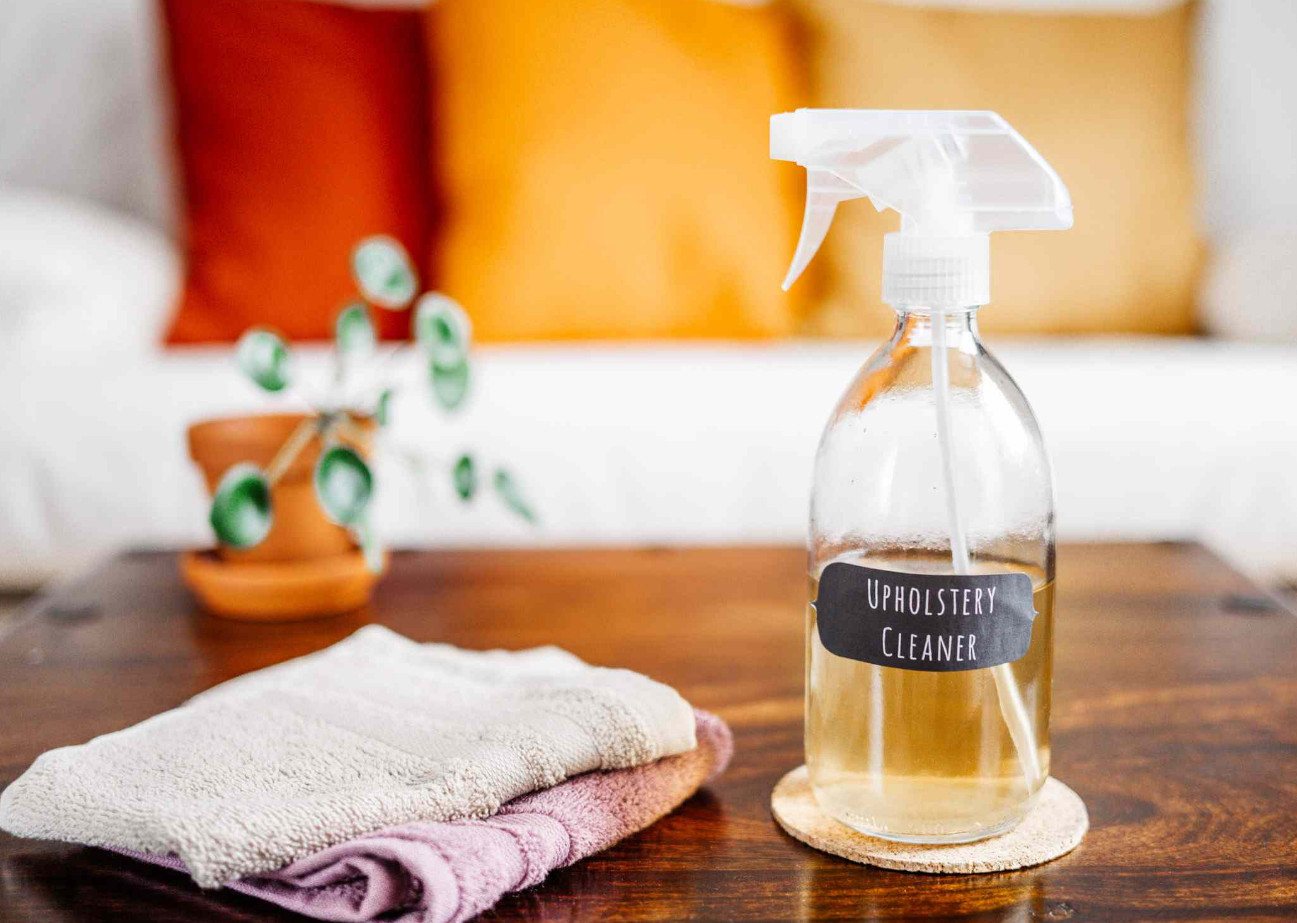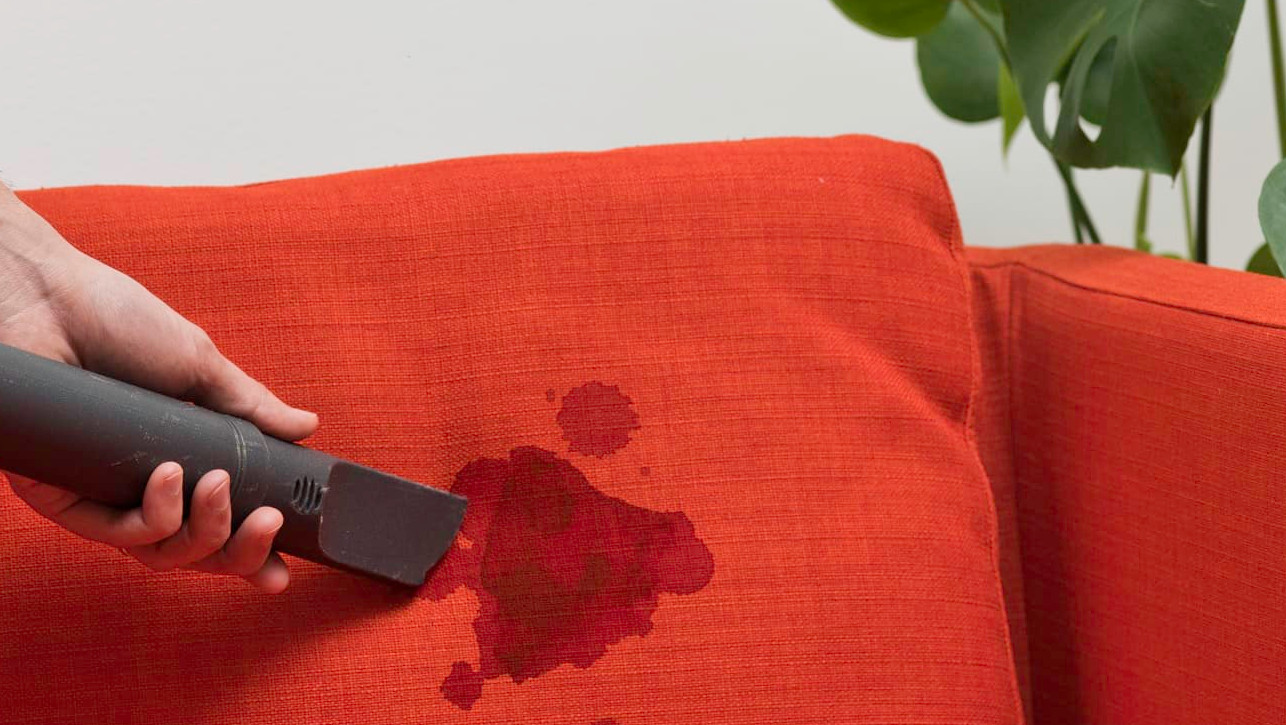How to clean upholstery yourself
Upholstered furniture is comfortable and attractive for any room but over time, it becomes dirty, stained or worn. You should clean it often to keep it looking and lasting good. You can hire upholstery cleaning services but if you learn how to clean upholstery yourself, you can both save money and be in control. Getting the furniture fresh and beautiful at home is not hard with the right skills.
Understanding Your Upholstery
You’ll want to know which upholstery you’re dealing with before cleaning it. Different fabrics have different compositions and when you use the wrong cleaning procedure it can damage them. : Most furnishings will have a care label containing codes for what to clean:
W: Use water-based cleaners.
S: Clean using solvent cleaners (dry cleaning only).
WS: There’s nothing dangerous about water- and solvent-based cleaners.
X: Only vacuum, don’t use any liquids.
If it has no label, try cleaning a small patch of cloth (an invisible spot) to ensure that you won’t ruin it using the cleaner you use. I discovered this first-hand when I used a liquid cleaner on a sofa that can be dry-cleaned only — and there were ugly watermarks.

Gather Your Cleaning Supplies
Clean upholstery in the right way, with the right tools and materials:
Steam Cleaner: Get a machine with an upholstery attachment.
Soft-Stick Brush: For picking up excess dirt.
Microfiber Cloths: Soft and super absorbent.
Gentle Detergent or Upholstery Cleaner: Choose a cleaner for your fabric.
Baking soda: For deodorization and detaching stains.
White Vinegar: An Eco-friendly Cleanser.
Distilled Water: Eliminates mineral build-up on textile.
Ethan Caldwell, as the author of this article and a home management expert, says :
I also always carry around a little handheld steamer for that as well. Steam will clean and re-fresh upholstery, particularly the heavy furniture such as sofas.

Step 1: Clean thoroughly First, Vacuum Until All Is Out.
When it comes to cleaning upholstery, the biggest and best part is vacuuming. It sweeps surface dust, pet hair and crumbs away so that these don’t get sucked into the fabric while it is cleaned more deeply. Watch out especially for seams and cracks where dirt dries up.
For small wrinkles I prefer a crevice tool, and a soft brush with an attachment for thin fabrics. For dog lovers like me, getting a pet hair vacuum is life-changing.
You can also read these articles on our website:
Can Vinegar Ruin Your Couch ? What You Need to Know
Is Vinegar Safe for Wood Furniture? What You Need to Know
Step 2: Tackle Stains
Stains are going to happen, but early detection makes all the difference. The following are a few tricks for normal stains:
Spills of Food & Drink: Blot (not rub!) the spot with a damp cloth to soak up liquid. Then clean with a water-based cleaner for water resistant fabrics.
Stains From Oil: Scrub stain with baking soda and let it sit 15 minutes to soak up the grease. Sponge the room and scrub with a chemical cleanser.
Tattoo or Dye Spots: Pour a little rubbing alcohol on a microfiber cloth and blot the spot.
Special Tip: Do not work from the outside of the stain to spread. The other time I scrubbed hard at a coffee spot and spread, and the fibres were damaged.
Step 3: Upholstery – Deep Cleaning the Upholstery.
For a deep cleaning, do these:
Test in Spot: Before using any cleaner, use it on a hidden area to test for stains or damage.
Use Cleaner: Apply a drop or two of mild detergent to distilled water and use on washable clothing that doesn’t need to be cleaned by water. Scrub the area in circular motions with a microfiber cloth.
Rinse: Wash away any soap globs with a soft towel. Avoid over-wetting the fabric.
Dries: Speed up drying with a fan or window. Don’t put your legs on the furniture until it is thoroughly dry (so you don’t get mold or mildew).
If the clothes are solvent-clean, dry-clean using a dry-cleaning detergent per the instructions. My recommendation is use these cleaners sparingly because too much of them dries leaving a film.
Step 4: Deodorize and Refresh
Stains may stick to leather furniture, especially if the family has pets or smokers. Baking soda is a great natural deodorant. Apply it all over the fabric, leave it for at least 20 minutes, and vacuum up. If you’d like a new scent, I add a couple drops of essential oil to the baking soda prior to use. My personal favorites are lavender or eucalyptus.
A second thing I have used has white vinegar to nip off noxious odours. Pour vinegar and distilled water in a spray bottle and mist the upholstery lightly. It smells vinegary, but that disappears as it dries.
Preventive Maintenance Tips
Upholstery cleaning needn’t be a scary chore, if you are proactive:
Put on Slipcovers: Slipcovers are cleaner and save the fabric.
Rotate Cushions: This will eliminate unidirectional wear and helps to save the life of furniture.
Keep Pets Brushed: Brushing pets daily reduces shedding and dander on furniture.
Use No-Eating Zones: Stain prevention can be eliminated by keeping food and beverages in one spot.
These habits, I have discovered, have slashed the amount of deep cleaning in my own home.
When to Seek Professional Help
The cleaning can be done on the house yourself for most cases, but there are instances when you need professional help. Stains, old or fragile upholstery, and bad odours can call for special tools and training. I once tried to vacuum a vintage armchair myself, and learned that I could do no more. A good cleaning man cleaned it beautifully and it was well worth it.
Final Thoughts
Cleaning your upholstery yourself is a good job that is affordable and looks great on your furniture. All it takes is to know your fabric, the right equipment, and to take action on stains fast. Though it takes some effort, the end result of seeing your furniture looking like it used to is well worth it.
You too can have a clean and fresh-smelling upholstery that makes your home feel and look nice with these steps and tricks. Just remember: patience and consistency are your friends.
FAQ :
- What is the easiest way to clean upholstery?
The easiest way to clean upholstery is to vacuum it first to remove loose dirt and debris. Then, use a mild detergent mixed with warm water and a soft cloth to gently scrub the surface. Always test the solution on a small, hidden area first to ensure it doesn’t damage the fabric. Finally, blot with a clean, damp cloth and let it air dry. - What is the best homemade upholstery cleaner?
A simple and effective homemade upholstery cleaner can be made by mixing 1 tablespoon of dish soap with 2 cups of warm water. For tougher stains, add 1 tablespoon of baking soda or white vinegar. Apply the solution with a soft cloth, gently scrub, and then wipe with a damp cloth. Avoid over-wetting the fabric. - How can I clean my couch fabric at home?
To clean couch fabric at home, start by vacuuming to remove dust and dirt. Use a mild cleaning solution, such as dish soap mixed with water, and apply it with a soft brush or cloth. Gently scrub in circular motions, then blot with a clean, damp cloth to remove excess moisture. Allow it to air dry completely. - How can I clean upholstery at home without a machine?
To clean upholstery without a machine, vacuum the surface thoroughly. Create a cleaning solution using mild soap and water, and apply it with a soft cloth or sponge. Gently scrub the fabric, then use a clean, damp cloth to rinse the area. Blot dry with a towel and let it air dry, avoiding direct sunlight.
Article source:

Great tips! I’ve been struggling with a persistent coffee stain on my microfiber couch. Has anyone tried the vinegar and baking soda combo? Does it really work without damaging the fabric?
Yes, the vinegar and baking soda combination can work wonders on coffee stains. Make a paste, apply it to the stain, and let it sit for about 15 minutes before blotting gently with a damp cloth. Just avoid over-saturating the microfiber!
I love the idea of using natural solutions like baking soda and essential oils. Are there specific oils that work better for deodorizing upholstery, especially after pet accidents?
Essential oils like lavender and tea tree are great options for deodorizing upholstery. Lavender has a calming scent, while tea tree oil has antimicrobial properties, which can help with odors caused by bacteria.
Thanks for the detailed guide! I have a leather recliner that’s starting to crack. Would a leather conditioner really help, or is it too late to fix?
Using a leather conditioner can definitely help reduce cracking by restoring moisture to the leather. Start with a small amount and apply it evenly. If the cracks are deep, you may want to consult a professional to prevent further damage.
Can I use a steam cleaner on all types of upholstery fabrics, or are there materials I should avoid steaming?
Not all fabrics are suitable for steam cleaning. Always check the care label on your furniture. If it’s marked with an “S” (solvent-based cleaners only) or “X” (vacuum only), avoid using steam to prevent damage.
How can I remove ink stains from my fabric sofa without causing discoloration?
Hi Michael! For ink stains, gently dab the area with a cloth lightly moistened with rubbing alcohol. Avoid rubbing, as it may spread the ink. Always test on a hidden spot first to ensure there’s no discoloration.
Is it safe to use baking soda on velvet upholstery to remove odors, or could it damage the fabric?
Baking soda can be used on velvet upholstery to help remove odors. Sprinkle a light layer, let it sit for about 15-20 minutes, then gently vacuum it off. Ensure you use a soft brush attachment to avoid damaging the fabric.
How often should I deep clean my upholstered furniture to maintain its appearance and longevity?
It’s recommended to deep clean your upholstered furniture every 12-18 months. However, regular maintenance like weekly vacuuming and prompt spot cleaning can help maintain its appearance between deep cleanings.